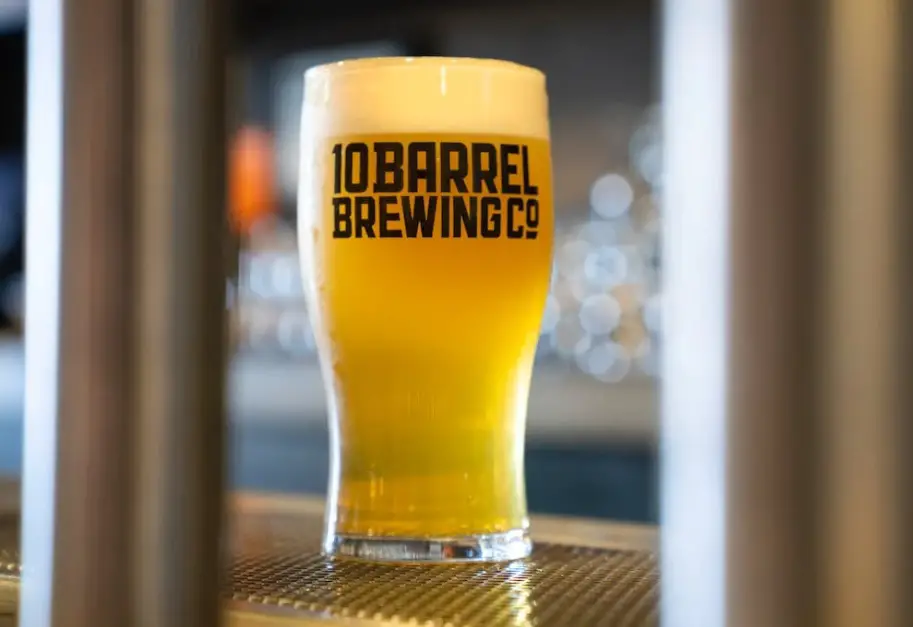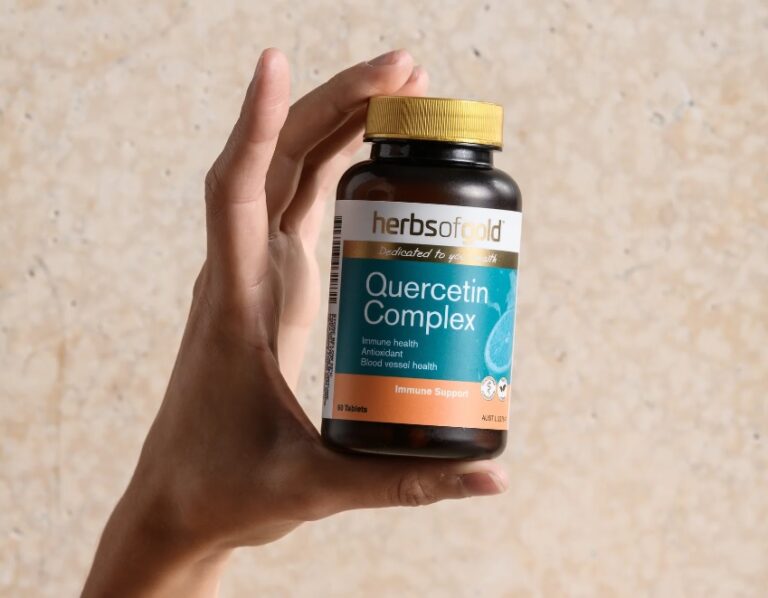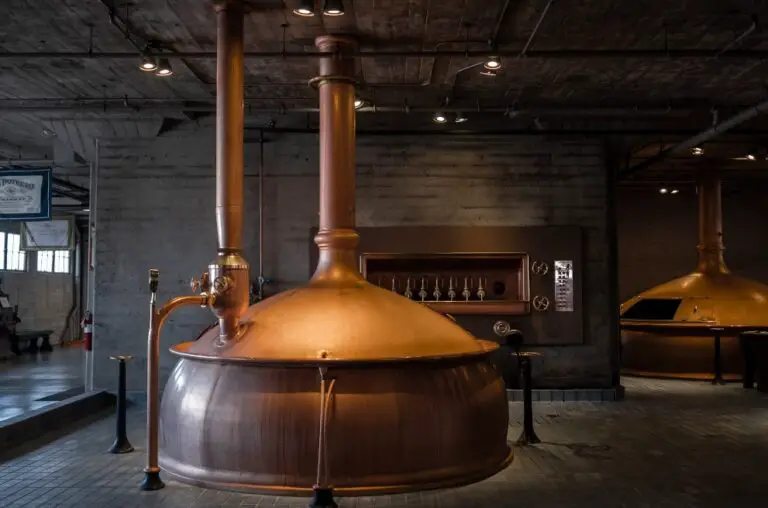How Much Zinc Is In Beer?
We all know about zinc – it’s an important micronutrient in our diets. But how much zinc is in beer?
Beer contains a modest amount of zinc, contributing to the overall dietary intake of this essential mineral. On average, a standard 12-ounce (355 ml) serving of beer contains approximately 0.15 to 0.3 milligrams of zinc.
Follow us on Instagram!
The exact amount can vary depending on the type of beer and the brewing process.
While beer may not be a significant source of zinc compared to other foods, its consumption can still contribute to meeting daily nutritional needs. It’s worth noting that factors such as the type of grains used in brewing and the specific brewing methods can influence the zinc content in beer.

How Much Zinc is in Each Type of Beer?
Sure, here’s a general breakdown of zinc content in different styles of beers, measured in milligrams per 12-ounce serving:
- Lager: Approximately 0.15 mg
- Ale: Around 0.2 mg
- Stout: About 0.25 mg
- Wheat Beer: Typically 0.18 mg
- Pilsner: Roughly 0.17 mg
- IPA (India Pale Ale): Varies, but often in the range of 0.2 to 0.25 mg
- Porter: Around 0.22 mg
- Sour Beer: Can vary widely, but generally falls in the range of 0.15 to 0.3 mg
The Recommended Dietary Allowance (RDA) for zinc, as provided by the National Institutes of Health (NIH) in the United States, is 11 mg for men and 9 mg for women.

Why is Zinc Important?
Zinc is an essential mineral that plays a crucial role in various physiological functions within the body. Some of the key reasons why zinc is important include:
Immune System Support: Zinc is vital for the proper functioning of the immune system. It helps in the development and function of immune cells, and a deficiency in zinc can impair the body’s ability to fight off infections and illnesses.
Cell Division and Growth: Zinc is involved in cellular division, which is crucial for growth, development, and the maintenance of tissues. It plays a role in DNA synthesis and helps regulate cell growth and repair.
Wound Healing: Zinc is necessary for the healing of wounds and the repair of tissues. It is involved in the production of collagen, a protein that forms the structural foundation for skin, muscles, and other tissues.
Sense of Taste and Smell: Zinc is important for the proper functioning of taste and smell receptors. A deficiency in zinc can lead to a decreased ability to taste and smell.
Protein Synthesis: Zinc is involved in the synthesis of proteins, which are essential for various bodily functions. It helps in the creation of enzymes and supports the regulation of gene expression.
Reproductive Health: Zinc is crucial for reproductive health in both men and women. It plays a role in the development of healthy sperm and is involved in the menstrual cycle and fertility in women.
Neurological Function: Zinc is important for proper brain function and plays a role in neurotransmitter regulation. It is involved in learning, memory, and overall cognitive function.
Antioxidant Defense: Zinc acts as an antioxidant, helping to protect cells from oxidative stress. It helps neutralize free radicals and supports overall cellular health.

Zinc in Brewing
The zinc content in beer is influenced by both the ingredients used in brewing and the brewing process itself. Barley, a primary ingredient in beer, contains zinc, and the malting process can impact its availability.
Additionally, the choice of hops and water composition further contributes to the zinc content. During brewing, yeast plays a crucial role in fermenting sugars and producing alcohol, and it also absorbs zinc from the wort. The fermentation process, temperature, and yeast strain can affect the level of zinc retained in the final beer.
While beer is not a significant source of zinc compared to other dietary elements, the brewing process introduces variables that influence the mineral content. Exploring these aspects can provide insights into the role of beer as a potential contributor to overall dietary zinc intake.
Zinc Absorption from Beer
Analysis of factors that may influence the bioavailability of zinc in beer
The bioavailability of zinc in beer is subject to various factors. The types of grains used in brewing, such as barley and wheat, contain differing levels of zinc. The malting process can affect the solubility and accessibility of zinc, influencing its absorption during fermentation.
Additionally, the interaction between zinc and other minerals and compounds in the brewing process can impact its ultimate bioavailability in the finished beer. Understanding these factors provides insights into the complex dynamics that determine the zinc content in the beverage.
Comparison of zinc absorption from beer with other dietary sources
While beer contributes to zinc intake, it’s essential to recognize that its zinc content is relatively modest compared to other dietary sources. Foods like meat, dairy products, nuts, and seeds are often more concentrated and bioavailable sources of zinc.
Comparing the zinc absorption from beer with these sources highlights the importance of maintaining a diverse and balanced diet to meet daily nutritional requirements.
Acknowledging the role of various foods in zinc intake helps individuals make informed choices for overall health and well-being.
Consideration of the impact of alcohol content on zinc absorption
The alcohol content in beer can potentially influence zinc absorption. Excessive alcohol consumption may interfere with the body’s ability to absorb and utilize zinc efficiently. Alcohol can impair the absorption of minerals in the gastrointestinal tract, potentially affecting the bioavailability of zinc from beer.

Too Much Zinc? What Happens?
Overview of the symptoms of zinc toxicity
Zinc, while essential for health, can pose risks when consumed in excess. Symptoms of zinc toxicity include nausea, vomiting, loss of appetite, abdominal cramps, and diarrhea.
Chronic exposure to high zinc levels may lead to more severe issues such as impaired immune function, lower levels of “good” HDL cholesterol, and disruption of copper absorption. Recognizing these symptoms is crucial for preventing and addressing potential complications associated with excessive zinc intake.
Discussion of the potential risks associated with consuming too much zinc
Consuming zinc beyond the recommended levels can have adverse effects on health. Chronic overconsumption, either through dietary sources or supplements, may disrupt the balance of other essential minerals, such as magnesium, copper, and iron.
It can also lead to complications like lowered immunity, gastrointestinal disturbances, and even long-term metabolic imbalances.
Highlighting the importance of moderation in beer consumption
While beer can contribute to overall zinc intake, it is essential to consume it in moderation to avoid the potential risks associated with excessive zinc consumption. The alcohol content in beer, in addition to its zinc content, should be considered. Excessive alcohol intake can interfere with zinc absorption and compound the risks of zinc toxicity.
Emphasizing the importance of moderation in beer consumption aligns with broader health recommendations and encourages responsible drinking practices.

Wrapping It Up
The connection between zinc and beer offers a fascinating glimpse into the nutritional aspects of a beloved beverage.
While beer provides a small amount of zinc, factors like brewing techniques and ingredient choices influence its presence. It’s essential to enjoy beer in moderation, being mindful of potential risks associated with excessive zinc intake.
By understanding the balance between pleasure and health, we can savor our favorite brew responsibly, appreciating its role in our lives without compromising overall well-being.

I am a young architect with a passion that goes beyond blueprints… it’s beer! undertherosebrewing.com is more than just a blog, it’s a manifestation of my lifelong dream to explore, read, and learn everything about beer. Join the blog on this unfiltered and genuine adventure into the heart of beer culture. Cheers!






